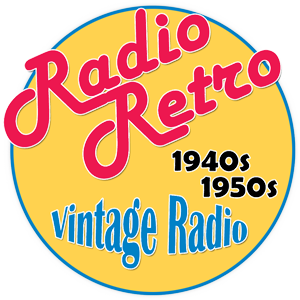 A Look at Two Decades of Style
A Look at Two Decades of Style
Fashion Trends from 1940 to 1959
The period from 1940 to 1959 was a transformative era in fashion, reflecting the social, political, and economic changes that shaped the world. From the practical, rationed styles of World War II to the extravagant femininity of the 1950s, fashion evolved significantly during these two decades. This article explores the major trends, key designers, and cultural influences that defined fashion from the 1940s to the late 1950s.
The 1940s: Wartime Practicality and Postwar Elegance
The early 1940s were heavily influenced by World War II and had an impact on the availability of materials and the design of clothing. Fashion had to be practical and resourceful, yet it maintained a sense of style.
- Utility Fashion and Rationing: Due to wartime rationing, clothing production was limited, and designers had to create stylish yet efficient garments. Women’s fashion featured simple A-line skirts, structured jackets, and blouses with padded shoulders to mimic a military-inspired look. Fabric restrictions meant that garments were shorter and more fitted, with minimal embellishments.
- The Victory Suit: One of the most iconic looks of the war era was the "victory suit," a two-piece ensemble with a tailored skirt and matching jacket. This outfit symbolized resilience and practicality and was worn for work and everyday activities.
- Workwear and Rosie the Riveter: Women took on jobs traditionally held by men, which led to the rise of functional workwear, including high-waisted trousers, overalls, and durable blouses. The famous "Rosie the Riveter" look, denim jeans, a button-up shirt, and a bandana became an iconic representation of women’s contribution to the war effort.
- Postwar Fashion Boom: After the war ended in 1945, fashion took a turn toward elegance. With the lifting of rationing, designers embraced luxurious fabrics like silk and velvet. Evening wear became more elaborate, with flowing gowns, off-the-shoulder styles, and cinched waists.
- Christian Dior’s "New Look": In 1947, Christian Dior revolutionized women’s fashion with the "New Look." This style featured voluminous skirts, nipped-in waists, and soft shoulders, returning to ultra-feminine silhouettes. The New Look defined the late 1940s and set the stage for 1950s fashion.
 The 1950s: Ultra-Feminine Elegance and Casual Chic
The 1950s: Ultra-Feminine Elegance and Casual Chic
The 1950s embraced a sense of optimism and prosperity, which was reflected in the fashion trends. Women’s clothing became more glamorous, structured, and highly stylized, while casualwear also gained popularity.
- The Hourglass Silhouette: The 1950s idealized the hourglass figure, with cinched waists and full skirts creating a highly feminine aesthetic. Dresses featured sweetheart necklines, fitted bodices, and petticoats for added volume. The pencil skirt was another popular option, emphasizing a sleek and sophisticated look.
- Iconic Designers: Designers like Christian Dior, Hubert de Givenchy, and Coco Chanel dominated the fashion world. Dior’s "New Look" remained influential, while Chanel reintroduced her signature tweed suits and little black dresses.
- Casual and Youthful Styles: As leisure activities became more common, casualwear gained traction. Capri pants, pedal pushers, and full-skirted day dresses became everyday staples. Teenagers began influencing fashion, leading to the popularity of poodle skirts, saddle shoes, and letterman jackets.
- Hollywood’s Influence: Actresses like Marilyn Monroe, Audrey Hepburn, and Grace Kelly set the trends for women’s fashion. Monroe popularized figure-hugging dresses, Hepburn made cropped pants and ballet flats a must-have, and Kelly’s refined, ladylike style inspired elegance across the world.
- Menswear Trends: Men’s fashion in the 1950s was characterized by sharp tailoring and relaxed casual wear. Business suits featured slim-cut jackets and narrow lapels, while casual styles included Hawaiian shirts, denim jeans, and leather jackets—a trend heavily influenced by movie stars like James Dean and Marlon Brando.
Conclusion
Fashion between 1940 and 1959 evolved dramatically, from the utilitarian and modest styles of the wartime years to the glamorous and refined aesthetics of the 1950s. These two decades laid the foundation for modern fashion, influencing trends that continue to be referenced today. The legacy of designers like Christian Dior and Coco Chanel, along with the cultural impact of Hollywood stars, ensured that the styles of the 1940s and 1950s remained timeless and iconic.